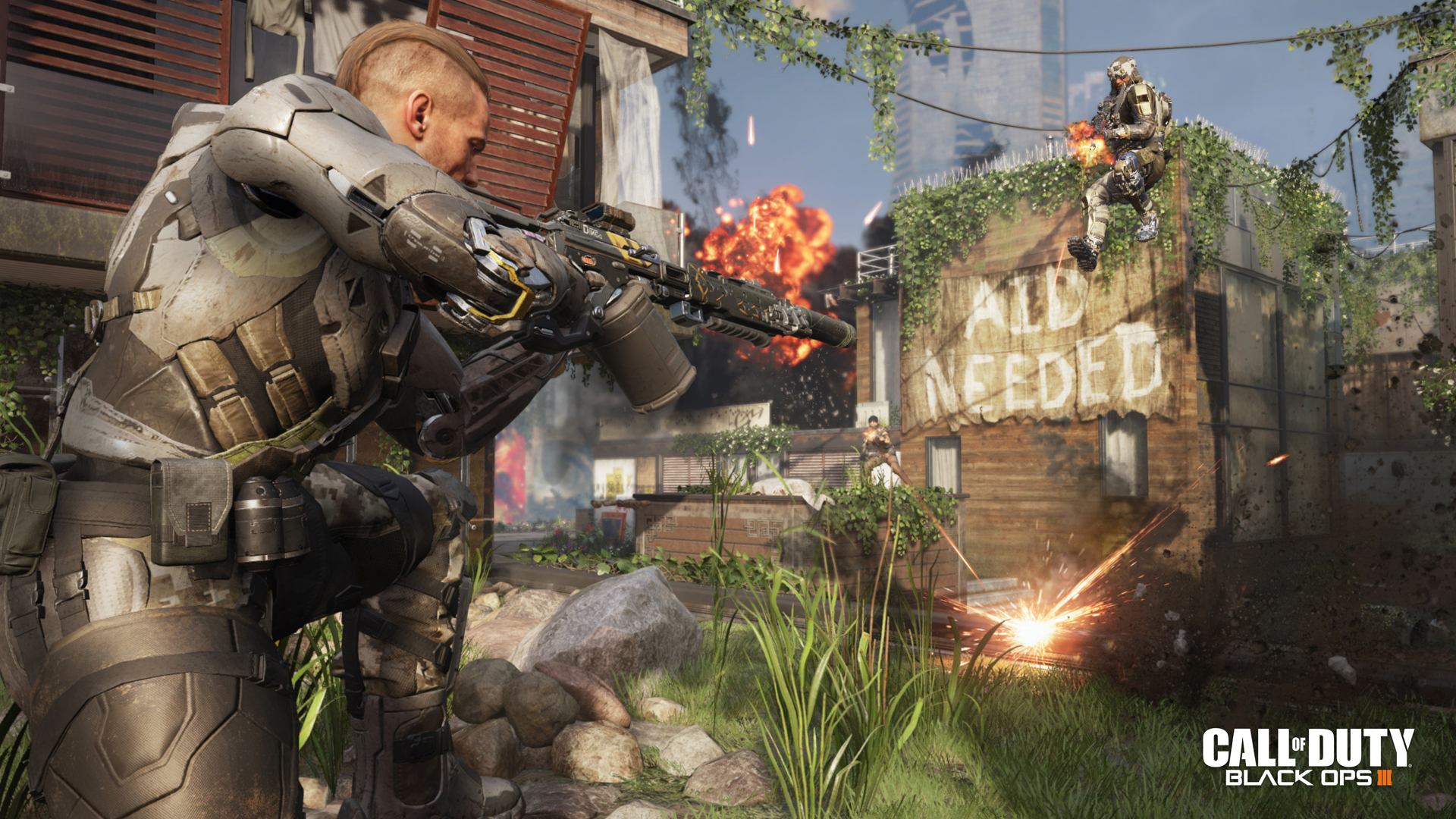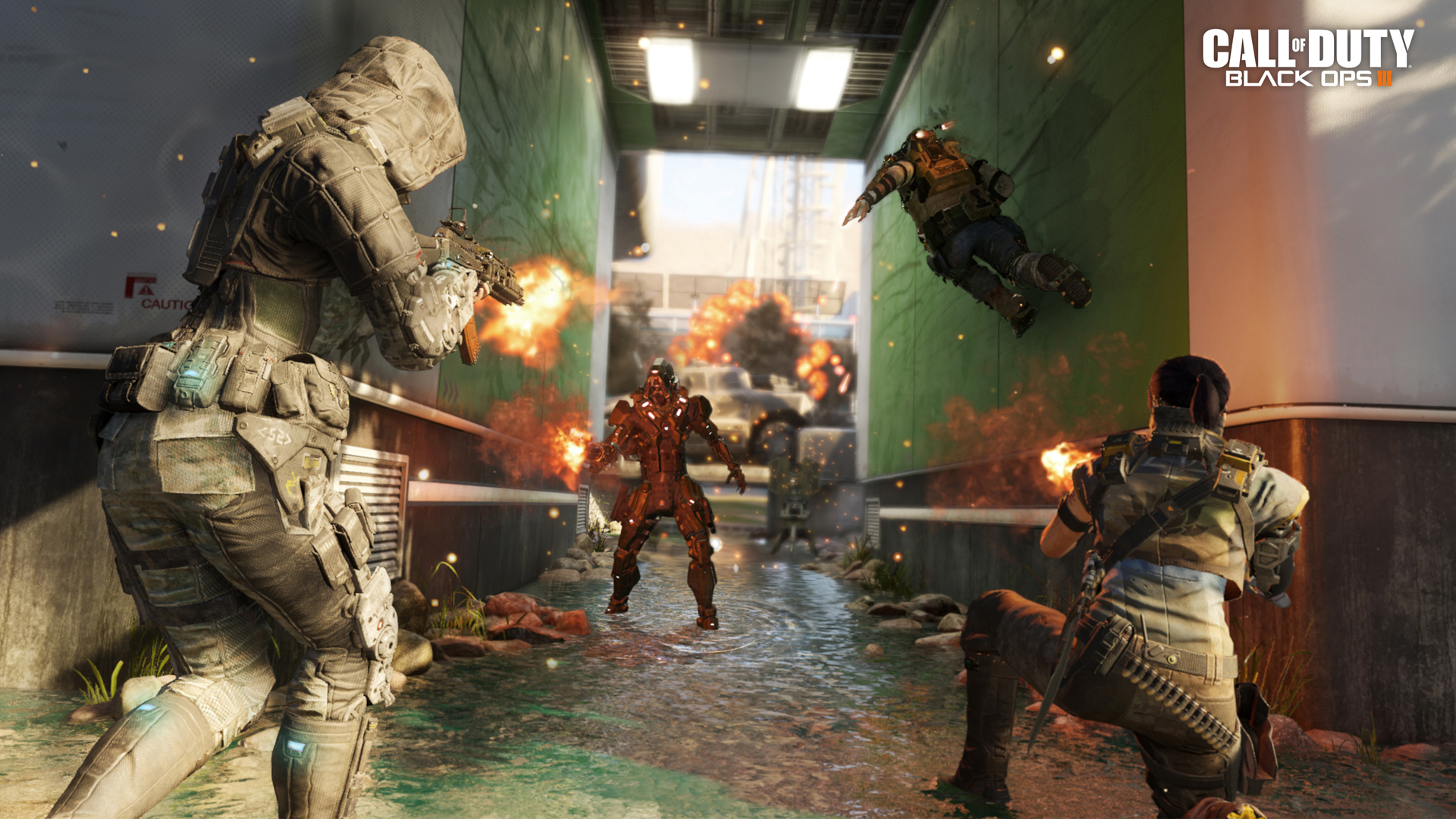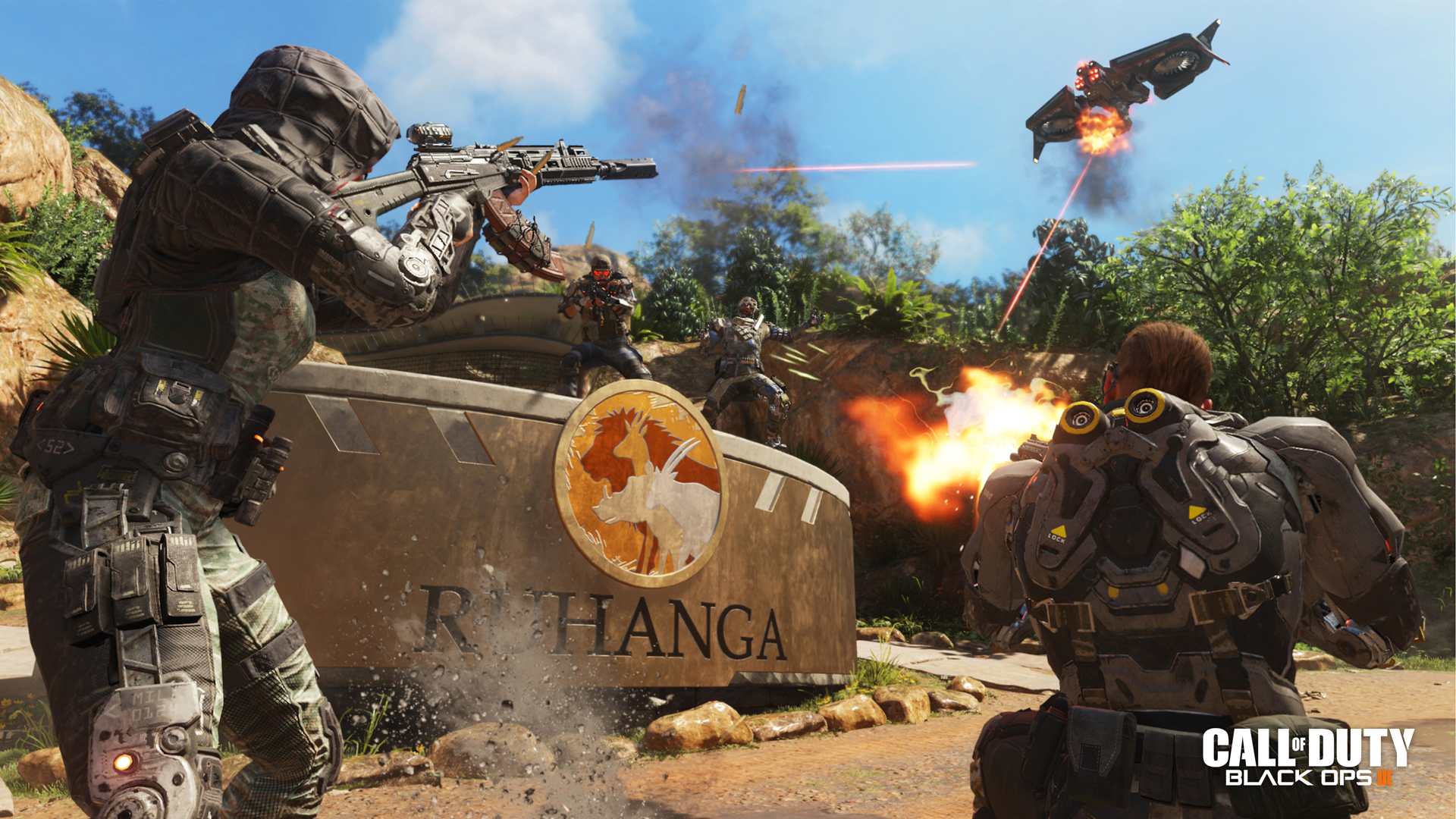So, how do you make the perfect Call of Duty multiplayer map?
COD is a beautiful mixture of science and art, a game that modestly hides incredibly smart design behind the 'big, brash shooter' badge it wears with pride to make players - old and new - feel included and excited about each iteration. There’s a hell of a lot of effort put in, each year, to making sure that everyone who plays has fun. And that’s not just about making the bangs bigger or the settings more outlandish - it’s about everything, right down to the way the multiplayer maps are made. Especially the way multiplayer arenas are made, actually. A great map can make you feel like a total badass, regardless of rank, loadout, or actual ability. With this idea burning inside my brain, and a license to chat about COD Black Ops 3, I sat down with Treyarch’s Studio Design Director, David Vonderhaar, to discuss the secret behind creating the perfect multiplayer map.

“We have a couple of things that are super important to us when it comes to map-making, and these were all things that we had to relearn to do because of all the combat movement stuff with the thrust jump and the wall run and the swimming and the power-sliding,” admits Vonderhaar when I first ask the question. He's clearly excited that someone has asked him about map design rather than pestering him with yet another question about zombies in Black Ops 3, which is locked down tighter than a bar of bullion in Fort Knox.
Ok, stay with me here, because things are going to get a little technical. “We talk a lot about what we call keeping the combat in frame,” he explains. “What I mean by that is no matter where you’re standing, anywhere in the map, you feel like you have a picture in front of you of where the action could be.” From here, he goes on to explain why that's so important. It's to do with something called 'checking down', which every player does - consciously or otherwise - when they play Call of Duty online.

“What I mean by that is I check that corner, I check that window, I check that path and people are most likely to be there, there, or there. So if I make the wrong decision about my check-down, which order I go in, then it’s all on me, because I should’ve checked down in a different order. But if I check them down correctly then I have the advantage in the fight.” He's talking about prioritisation, and the way the designers give players options and choices within each fight. If your map design has no logic, players feel lost - they don't feel as if they're in control of the decisions they make, and any kill / death that results from these kind of illogical decisions feel random and frustrating. The perfect COD map makes you feel in control of your own destiny, like you've engineered every kill, and that each personal demise is largely your own fault.
“We don’t you to feel like you can be, for lack of a better phrase, shot from anywhere,” says Vonderhaar. “So certainly people can come up behind you and certainly people can flank you, but you don’t want to feel enveloped or surrounded just all the time.” Yeah, there's nothing worse than feeling powerless in a multiplayer match. It leads to those 'to hell with this, I'm switching this game off forever' tantrums we've all had.

However, even the most obvious decisions can feel daunting if you're simply lost in a map. When you don't really know where to run, and you seem to be getting picked off by people who know the area like the back of their hand. Well, the very best maps are ones that seek to minimise this sensation by using what Vonderhaar calls 'the three lane philosophy'. “It’s a very generic term to represent the idea that when you start a match - and you look out - you need to understand right away that the way to navigate the map is this way, this way, and this way. So there’s never more than (decision making wise) three decisions in your brain about how you move or where you check down, to where people can be. And that’s really key.”
That's all well and good, but the increasing use of verticality and advanced movement in COD makes these simple design philosophies much tricker to implement. How do you make it super-obvious that you can jet-pack up to a ledge, or dive down into a body of water, and swim under your enemies? Vonderhaar admits it has been a challenge in Black Ops 3 because the team lost sight of the basics. “So in this game, what was pretty interesting to us was – we were making all the new combat movement mechanics very early on in development, and we forgot how to understand how to apply those principles when you’re a little more vertical or when you’re swimming, because you’re like, under the map,” he says. “In the end, ironically all that stuff finally made sense and started to feel good when we went right back to that core principle philosophy about three-lane design, about keeping the combat in frame, and about being able to check down.”
Weekly digests, tales from the communities you love, and more

“As soon as we went back and re-applied all the lessons we had learned up to this point to the new combat movement, then it actually got fun again, and we knew we were going to be okay.” And you really notice the difference. After the interview I got hands on with the new multiplayer and - while I did occasionally get slaughtered by more experienced players - there was never a feeling that I was fumbling around the map, lost in my own inexperience. In fact, I managed to get on several kill-streaks by just making sensible decisions and reacting quickly during one-on-ones. I felt good, despite largely having my ass handed to me... and when losing feels fine, that's the moment when you know you've played a perfectly designed multiplayer map.



